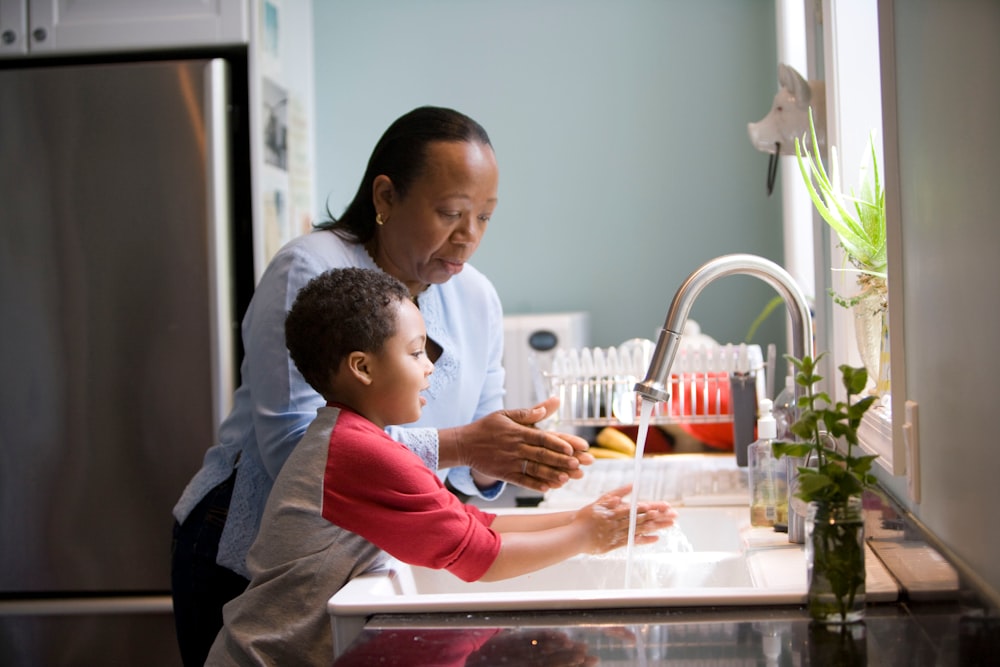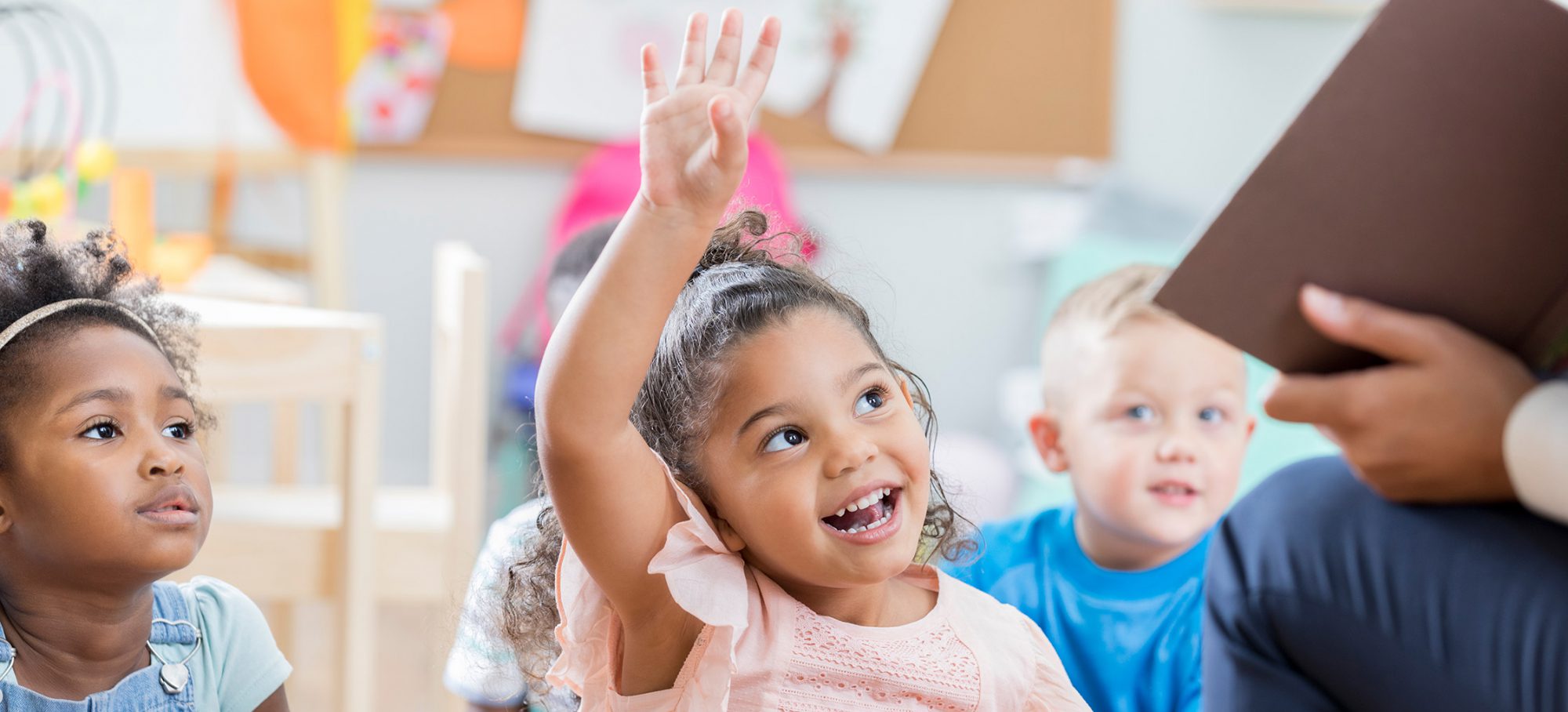The COVID-19 pandemic has certainly posed many challenges for families across the world. Precautions to stop the spread of the disease have changed the way we work, play, and interact with one another on a daily basis. Though it’s not easy on anyone, this time can be especially confusing for young children. They may struggle to fully understand the scenario, which can cause feelings of anxiety and fear.
Luckily, there are steps that parents can take to lessen their child’s fears in the age of coronavirus. To learn more, PrekAdvisor spoke with Rhian Evans Allvin, the Chief Executive Officer of the National Association for the Education of Young Children. In this article, we’ll share her wisdom and break down how parents can talk to their children, teach them how to be safe, and help them maintain routines in the midst of the pandemic.

Acknowledge the Situation and Talk About It
The first step to alleviating anxieties about COVID-19 is to put the situation out in the open for discussion.
“I think overall the best way to overcome fear is to acknowledge the situation, whatever it is, and then talk about. Have conversations about it,” Allvin explains. Openly discussing the subject allows children to get answers to their questions in a way that they understand. Walk them through any changes or things that may happen that are out of the ordinary. These kinds of conversations will help eliminate surprises that might otherwise catch them off guard.
The CDC has even released guidelines and tips for talking with your child about coronavirus. Some of their biggest tips include:
- Reassure them. Make your child feel safe and let them know that it’s okay to feel confused or anxious during this time. Let them know that they are safe.
- Be calm. Not only will your answers help calm their fears, but so will the way you say it. Children are great at picking up on body language and other conversational cues. Explaining the situation without panic is key.
- Use language that a child will understand. Be honest about what is going on, but keep the conversation kid-friendly.
- Watch what they consume on TV and the internet. You may not think anything of it, but subjecting children to endless news cycles of dread and doom can be overwhelming. While you don’t want to hide the truth, too much info can lead to anxiety. Limit their screen time and access to information geared towards adult audiences.
- Avoid language that places blame on others. Be mindful of what you say. Placing blame upon a certain group of people can lead to stigma.
Get Specific About Their Fears
When talking about it, be sure to address specific fears. Allvin reminds parents to not only comfort and explain, but to listen as well.
“Ask kids, point-blank, what are you afraid of?” she says. Inquire about their specific anxieties and fears. This will allow you to hone in on particular aspects of the situation that they may find challenging. Some kids, for example, may be unsure of masks. “If a child expresses fear about the mask, practice putting one on while talking about why you’ve got the mask on and what it’s doing,” Allvin explains. Show understanding and empathy while simultaneously reframing their anxieties.
“The more that parents are able to calmly explain and have conversation with children about their fears, about their questions, about their curiosities and wonderings, I think the more children have the opportunity to overcome their fear,” Allvin says.
Teach Children How to Be Safe

Teaching children hygiene and basic safety precautions will not only help prevent the spread of COVID-19 and other germs, but it can help soothe anxieties by giving them some aspect of control over their wellbeing.
Some of the most important lessons to teach your child are:
- Proper handwashing techniques: Remind them that washing their hands for 20 seconds can help stop germs from spreading. Important times to wash are before eating, after blowing your nose, after playing with others or outside, and after using the restroom.
- Cough or sneeze into their elbow: Get them into the habit of covering their mouth if they feel a sneeze or cough coming.
- Avoid touching the face: It may be hard to get young children to follow this one, but stress the importance of not touching the eyes, nose, and mouth.
- Sanitize frequently: You can even enlist the help of your children in cleaning around the house. Teach them about disinfecting their toys and surfaces they touch frequently.
- Steer clear of people who may be sick: Teach them how to identify others who are coughing and sneezing and how to distance themselves respectfully.
To learn more about stopping the spread of germs and protecting children, visit the Centers for Disease Control and Prevention’s website.
Get Creative to Maintain Routines
Does your child have a routine that they’re missing out on due to social distancing? Maybe they usually go out for ice cream with Grandma and Grandpa on Fridays or have a playdate with neighbor friends on the weekend. Maintaining typical routines to the best of your ability can help anchor children in normalcy. Significant changes in schedules can be stressful, as they convey that there is indeed a crisis.
“Kids thrive on social interaction,” Allvin explains. Finding ways to keep up with their routine social interactions is important. Help your child break up the monotony of long days at home by connecting with others via Zoom or similar video conferencing platforms. Though it certainly doesn’t replace in-person interaction, giving your child space to talk, play, and collaborate with others their age, friends, and family through technology is vital.
If you are unable to keep up with your family’s normal schedule, make an effort to create new routines. Parents can also recreate patterns that they may experience at school. Set aside time for activities like arts and crafts, free play, music, and more.

You can also change up the scenery with time outside. Allvin notes that going outside while social distancing may be one of the most beneficial things for children. “There are more and more instances as states are opening where kids could be appropriately socially distanced outside,” she explains. Making time for outside experiences, even if it is as simple as chalk drawings on the sidewalk, is great for both the mental and physical health of children.
Conclusion
Talking about the current situation, teaching children to be safe, and getting creative with routines are just three simple steps that parents can take to ease fears and anxieties in their children during this time. Remember that your children look up to you. How you respond and react to the situation will influence how they react. Be informed, be calm, and be safe!

